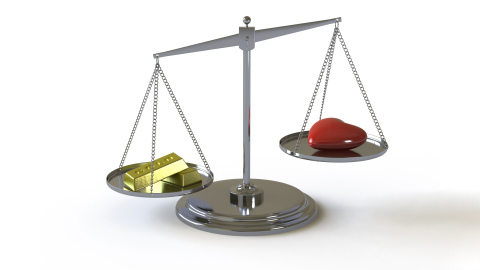In the late 1800s, the publishers’ ever-strengthening copyright monopoly had lopsided the creators’ chances of making any revenue off of their works. Basically, all the money went to publishers and distributors, and creators were left starving, due to the copyright monopoly. (Just like today.)
A person in France named Victor Hugo would take the initiative to try to level the playing field by internationalizing a French tradition known as droit d’auteur, “writer’s right”, into the copyright monopoly. Also, he would try to make the copyright monopoly international: until now, it had just been a national monopoly. A French writer could sell his monopoly to a French publisher, and the publisher would enjoy monopoly powers in France, but not in Germany or the United Kingdom. Hugo sought to change this.
Paradoxically, the copyright and patent monopolies were forgotten when free market laws were enacted across Europe in the mid-1800s. Patent law still talks about “prevention of disloyal competition” as justification for its existence, which is a remnant from when guilds dictated products, craftsmen, and prices; if a business practices loyal competition in their industry segment today, we raid them at dawn and haul their ass to court. The copyright monopoly is a similar remnant from the printing guild of London.
Victor Hugo would try to balance the immense powers of the publishers by giving creators some rights under the copyright monopoly as well, unfortunately impoverishing the public further. (It is important here to remember that there are three parties to the copyright conflict: creators, publishers, and the public. Ironically, the public is the only legitimate stakeholder in the monopoly’s design.)
While Hugo didn’t live to see the fruition of his initiative, the Berne Convention was signed in 1886. It said that countries should respect the copyrights of other countries, and an agency — BIRPI — was set up as watchdog. This agency has mutated, grown and swelled and is today WIPO, which still oversees the Berne Convention, which has also swelled, mutated and been hijacked twice. (More on this in the next part in the series.)
So, at this point, there are four aspects of the copyright monopoly, which have more differences between them than similarities:
One, the commercial monopoly to fixations of a work. This is the original monopoly granted to London’s printing guild in exchange for censorship.
Two, the commercial monopoly to performances of a work. If somebody performs a work publicly on a for-profit stage, the monopoly holder has a right to demand money.
Three, the droit moral to be acknowledged as creator. The right for an author or artist to be acknowledged as creator of his or her work, acting as protection against counterfeiting and against plagiarism.
Four, the droit moral to veto an improper performance of the work. If an artist feels that a performance slights the work or the name of the artist, they have the right to deny that performance the light of day.
The droits morals are very different in nature from the commercial monopolies in that they cannot be sold or transferred. This sets them sharply apart from the justification that convinced British Parliament to re-enact the copyright monopoly in 1709.
It is also noteworthy how often these four aspects are deliberately confused to defend the most controversial and damaging of the monopolies, the commercial monopoly on fixations (and later duplication). You will often hear people from the copyright industry defending the monopoly by asking “would you want somebody else to take your work and claim it was theirs?”. However, this is the quite uncontroversial third part, the droit moral of attribution and credit, which cannot honestly be used to defend any of the two commercial monopolies.
The United States didn’t like moral rights, by the way, so they stayed outside of the Berne Convention until they could use it for leverage against Toyota a hundred years later. We’ll return to that in part seven of this series.






[…] This post was mentioned on Twitter by Falkvinge, lillebrorsan, Wayne Borean, Andreas Karlsson, Razor and others. Razor said: Falkvinge: History of Copyright, part 5: Moral Rights http://bit.ly/f8GCDV […]
When you say that the moral rights cannot be transferred, what does that mean in the context of work-for-hire. That is, if i’m employed to create something and the copyright of this creation goes to the employer, then do I or my employer hold the moral rights? The copyright can go to the employer either by contract, as is often the case with photographs and writings, or by law, as is the case for computer programs in Sweden.
I think the bern convention states that the copyrights is always initially with a physical person. That would mean that it is then transferred to the employer but the moral rights stay with the employee right?
Lagen om upphovsrätt:
Datorprogram skapade i anställningsförhållanden
40 a § Upphovsrätten till ett datorprogram, som skapas av en arbetstagare som ett led i hans arbetsuppgifter eller efter instruktioner av arbetsgivaren, övergår till arbetsgivaren, såvida inte något an nat har avtalats. Lag (1992:1687).
http://www.riksdagen.se/webbnav/index.aspx?nid=3911&bet=1960:729#K3P40a
[…] the copyright monopoly internationalized in 1886, music became more and more interesting. The record industry was invited to Rome in 1933 by […]
[…] Part 5: Moral Rights […]
[…] Original en inglés. […]
[…] Next: Moral Rights on the Continent. […]
[…] Previous: Moral rights on the Continent. […]
[…] History of copyright, part 5: moral rights (en español) […]
[…] History of copyright, part 5: moral rights (en español) […]
[…] History of copyright, part 5: moral rights (en español) […]